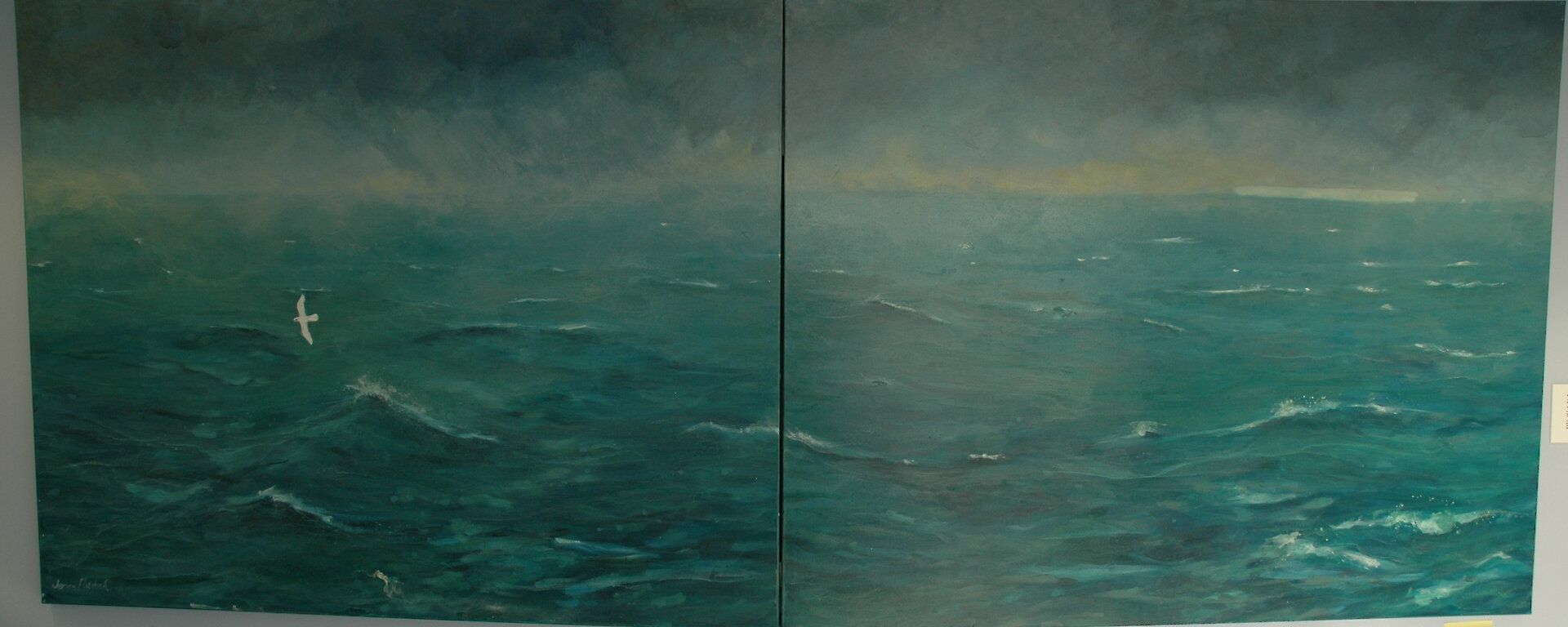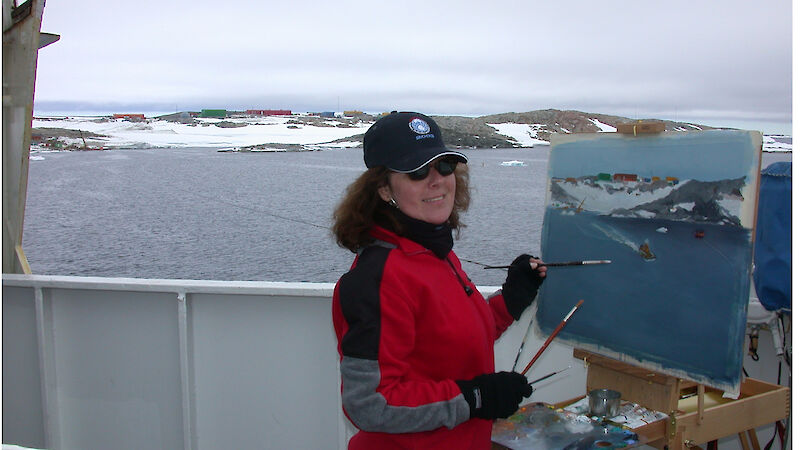Searching for ‘extraordinary’ landscape material to paint and photograph has taken Jenni Mitchell to some unusual places. Most of her search has been in the desert regions of Australia, particularly around the Lake Eyre Basin where she has made numerous trips to visit the Lake throughout its changing moods, from dry salt to flood.
In her work, Jenni searches for parallels, which she has found between the desert and sea. Her current focus on the extraordinary landscape of Antarctica is exploring parallels between the salt crust of Lake Eyre and the icescape of Antarctica.
In addition to her fascination with landscapes, Jenni has also painted portrait collections consisting of ‘100 Australian Poets’ and a series of politicians, writers and sports people.
Photography and writing are important components to her work, and used as tools for recording and representing the landscape or person.
Jenni Mitchell was born in Eltham, Victoria, where she continues to live and work from her studio.
She has held numerous exhibitions of her work throughout Australia, and much of her work is held in public and private collections. She runs workshops and has been artist-in-residence for Bundanon (Vic), the Writers Cottage (Tas) and the Varuna Writers Centre in the Blue Mountains, (NSW).
Jenni returned from Casey station, Antarctica where she was a recipient of the Australian Antarctic Division’s then-named ‘Humanities Program'. An exhibition of works produced from this voyage, titled To the Ice, was held at Montsalvat in Eltham from August to October, 2003.
Paintings from the Antarctic Series were on show at Parliament House in Canberra during May, 2004 as part of the Australian Antarctic Division’s exhibition to celebrate Mawson station’s 50th anniversary.
Antarctic impression
Antarctica has changed my perceptions and the way I work. It has influenced my colour palette, and the methods I use for putting paint on canvas. Whereas my desert painting work is often executed in a quick impressionistic manner, most of my Antarctic paintings require a longer gestation period. I am using a much slower method and technique where I am applying layers of glazes to the canvas. The glaze creates a ‘veil’ between the viewer and the subject on the canvas representing the elusive aspect of Antarctica; which is ‘within and out of reach’ simultaneously.
In my search for ‘extraordinary’ landscape material to paint, I have found the ultimate stimulation in the white ice cliffs, crevasses and plateau of Antarctica and I have no doubt I will not find such inspirational material elsewhere.
Antarctica represents completeness and the ultimate challenge to adequately find a visual language to represent the grandeur and fragility of the elusive white continent. The largest canvas cannot portray the hugeness of the subject nor the breadth of the changes in light and atmosphere. My short voyage to Casey has created restlessness within me and a desire to return; I have only glimpsed the possibilities of Antarctica.
TO THE ICE is Jenni's full-colour 80-page book of painting, prose and photography, and a record of her voyage as Artist-in-Residence on the resupply ship MV Polar Bird.



